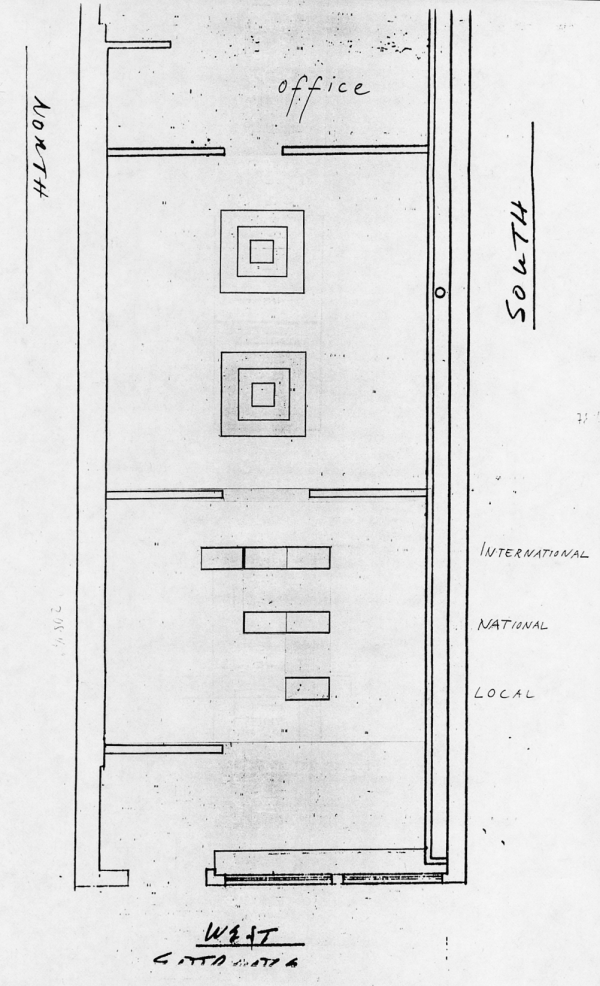
Installation view, room 1.
Installation view, preliminary room.
Installation plan.
Installation view, room 2.
“Newsstand Local,” 1995, arranged by Alexander Schröder, Private collection, Berlin.
News and Gifts
November 1995
American Fine Arts, Co., New York
Preliminary Room:
– “News and Gifts,” 1995, silkscreen on laminated chipboard, 52 x 36 inches
Room 1:
Installation: six exhibition displays, chipboard, laminated, silkscreen, each 66 x 36 x 18 inches
– “Newsstand Local,” 1995; Private collection, Berlin
– “Newsstand National #1,” 1995
– “Newsstand National #2,” 1995; destroyed
– “Newsstand International #1,” 1995; Barbara and Howard Morse, New York
– “Newsstand International #2,” 1995; Themistocles and Dare Michos, San Francisco
– “Newsstand International #3,” 1995; collection of F. C. Gundlach, Hamburg
Room 2:
Installation: two pyramids for products, chipboard, laminated; each 72 x 72 x 57 inches
– “Pyramid 1,” 1995
– “Pyramid 2,” 1995
“News and Gifts” took as its point of departure the New York district of Soho, home of the gallery American Fine Arts, Co. Here in the mid-nineteen-nineties, news bars and flagship stores were increasingly springing up around the galleries and replacing the old-fashioned newsstands and local shops. As in the case of the Calvin Klein flagship store designed by Donald Judd, which opened around the same time on Madison Avenue, the material aesthetic of the retail landscape was oriented toward Minimal Art of the nineteen-sixties and to the gallery aesthetic of “White Cubes,” with chromed and painted displays, artfully draped, and presenting individual products. In the entrance area, a large sign announced “News – Gifts.” In the first room, three rows of white laminated displays shelves were installed. These three empty units were arranged by number; on their sides, large black silkscreened letters read “LOCAL,” and “NATIONAL,” “INTERNATIONAL” respectively. The second room housed two identical large-scale pyramids of black, brown, and white laminate. Like the shelves, the two pyramids were empty, reflecting the viewers’ disappointment in their role as consumers.



